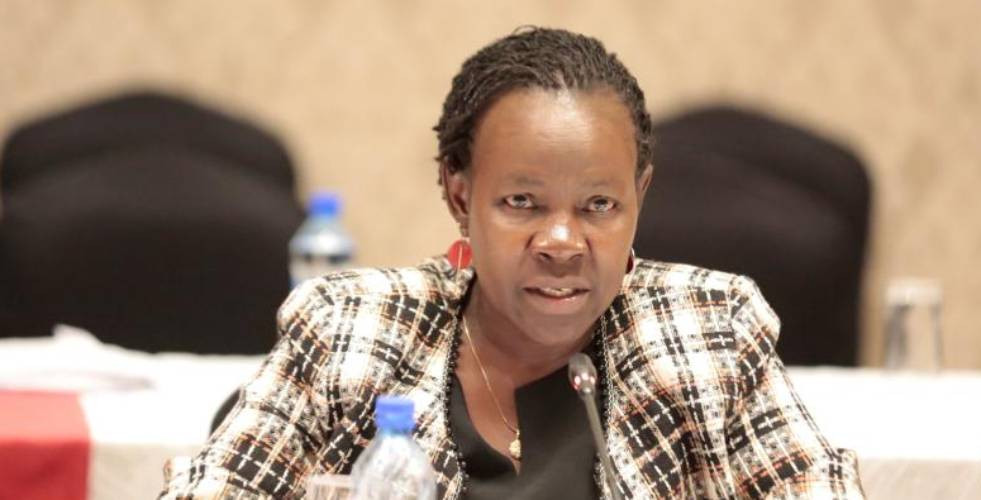A few weeks ago, I drove my family to one of our cities for a short holiday. My undergraduate alma mater is less than an hour’s drive from this city. I could barely resist the urge to show my son and daughter around my former college, a tour whose culmination was a visit to my first room as a First Year student there.
I walked into this hostel and knocked on the door of room 21, and a young man, Chrispine Omondi gladly welcomed us. The two kids were excited, swinging on Chrispine’s bunk bed and asking a flurry of questions of where I slept, ate and hung clothes. It was brief but intense. But more shocking was to see how deplorable and run-down the formerly tidy hostel was.
Peeled off
The floor in the entire building, previously covered with a glossy layer of cream-coloured linoleum, had completely peeled off, exposing unsightly cemented flooring. The stench from the nearby toilets was chocking, it so heavy that one felt they could almost hold it, and slice it piece by piece. Driving back, I was grilled by the two, who wondered how one can endure four years in a public university.
But our not-so-good experience notwithstanding, my alma mater does fairly well when university rankings are routinely released.
These rankings are now an important feature of higher education. Each year, different ranking schemes are published, ostensibly to offer guidance on which universities in a particular region are better than others in either teaching or research.
Locally, as elsewhere, the importance of the ranking is seen in how they are consumed and appropriated by universities. Those ranked high gloriously proclaim their victories and post them on their websites and re-publish them in newspapers and use the information as part of marketing.
Many universities claim merits from the rankings with self-congratulatory remarks by shrinking the scope down to a region, thus announcing they are among the top in ‘Africa’ or in ‘Kenya.’ However, what is rarely explained is that these rankings use specific indicators and methodologies that scarcely appreciate local contexts and which blind, and even distract, local universities from the more basic things.
There are about three or four major global bodies that publish university rankings every year. One of the most common, and perhaps the oldest, is China-based Shanghai Academic Ranking of World Universities (ARWU). This ranking was designed by Chinese authorities for Chinese universities to benchmark on institutions of higher learning in the West. Their methodology is straight-forward. It ranks universities based on the number of Nobel Laureates it has and the number of publications it has published in either the Nature or Science journal. As such, these rankings not only ignore the humanities but also universities with a strong focus on humanities perform dismally on this rank.
Also, the methodology used by the ARWU ranking favours big institutions as it merely measures ‘raw research power’ as opposed to research capacity relative to size of a university. There have been complaints that this methodology favours Anglo-Saxon higher education institutions. By focusing on only two journals edited by Westerners, relying on this ranking to make institutional decisions locally can be imprudent.
The Spain-based Web Ranking of Universities, published twice a year, is also influential globally. It is based on a number of web-based factors such as the volume of the web contents, the visibility of web publications and repositories. In short, it quantifies web visibility. Thus, a university’s worth is measured against the presence of its research output that is available online.
Local universities with poor or erratic internet infrastructure routinely score poorly in web ranking. Still, this ranking has had some fascinating effects on local universities.
Hundreds of ‘local journals’ that previously had no online presence have simply become invisible and lost prestige. Second, this ranking is pushing universities to upload on the web thousands of publications, most of which have not been peer-reviewed. The only positive emerging from this ranking is how it compels local universities to re-look at their drab websites that often look like the personal photo albums of senior university administrators.
The other popular ranking is the UK-based Times Higher Education rank (THE), currently the most-followed university ranking in the world today. Unlike the other rankings, THE attempts to measure actual research and the learning environment.
Alongside surveys on teaching quality and research citations, it measures the perceived reputation of the institution, subject ranking, the number of PhDs awarded in an academic year and even how much academics are paid. Importantly, this rank is considered more sensitive to the different realities that universities face with respect to regions.
Stay informed. Subscribe to our newsletter
However, this rank has been criticised for focusing too much on research citations and for using flawed methodologies that disadvantage less-endowed universities. Also, its reliance on surveying invite-only academics from Western universities makes some of their rankings subjective.
For local universities therefore, before celebrating or mourning any time a global university rank is published, some reflection and interrogation is needed.
Structural issues
Rankings should be used with caution and their methodologies understood clearly before reporting or using the results as a basis for strategic decisions. While they have their importance as a basis on how we compare with the best in the world, rankings should not distract us to the realities our universities face. Emerging top in lists narrowed to local contexts is akin to a pointless argument over height among a gathering of dwarfs.
Also, the reduction of the complexity of higher education to some imagined linear hierarchy ignores the fact that higher education must effect a personal change in an individual, and that universities must be agents of personal growth where an all-round personality is nurtured. Furthermore, this constructed hierarchy on several occasions creates illusions of equivalence when poorly ranked but well-endowed universities are paired closely with poorly equipped but well-ranked peers. In such situations, the less-endowed universities are blind to their own inadequacies.
Worse, the desire for visibility among universities occasioned by the obsession with topping of university rankings is forcing local universities to resort to short term, cosmetic adjustments aimed at outranking other local universities, rather than exploring deeper, structural issues ailing them.
There is need to interrogate how offshore rankings influence decisions and practice of higher education in African countries. A question worth asking is whether these rankings are adding value, or distracting universities from more pressing matters.
Of what use is a ranking that places universities like my alma mater at the top in local rankings yet, basic facilities are deplorable and deteriorating every day? Since that fateful trip, my six-year-old daughter has declared that while she will attend college, she will never reside in a university hostel.
—The writer is lecturer of media Studies at Moi University.
 The Standard Group Plc is a
multi-media organization with investments in media platforms spanning newspaper
print operations, television, radio broadcasting, digital and online services. The
Standard Group is recognized as a leading multi-media house in Kenya with a key
influence in matters of national and international interest.
The Standard Group Plc is a
multi-media organization with investments in media platforms spanning newspaper
print operations, television, radio broadcasting, digital and online services. The
Standard Group is recognized as a leading multi-media house in Kenya with a key
influence in matters of national and international interest.
 The Standard Group Plc is a
multi-media organization with investments in media platforms spanning newspaper
print operations, television, radio broadcasting, digital and online services. The
Standard Group is recognized as a leading multi-media house in Kenya with a key
influence in matters of national and international interest.
The Standard Group Plc is a
multi-media organization with investments in media platforms spanning newspaper
print operations, television, radio broadcasting, digital and online services. The
Standard Group is recognized as a leading multi-media house in Kenya with a key
influence in matters of national and international interest.








